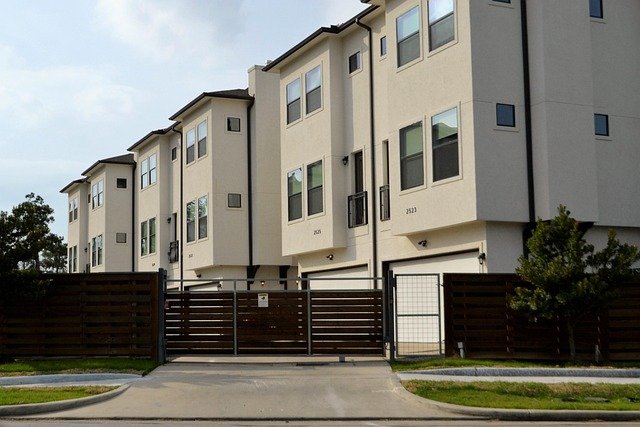Micro-Apartments: The Urban Housing Revolution
The real estate market is witnessing a paradigm shift as micro-apartments gain traction in major cities worldwide. These compact living spaces, typically ranging from 200 to 400 square feet, are reshaping urban housing landscapes and challenging traditional notions of home. With sky-high rents and limited space in metropolitan areas, micro-apartments offer an innovative solution to the urban housing crunch, appealing to young professionals, students, and minimalists alike.

The financial crisis of 2008 accelerated this trend, as many young professionals sought more economical housing options in prime urban locations. Cities like New York, San Francisco, and London became early adopters, with developers converting old buildings or constructing purpose-built micro-apartment complexes to meet growing demand.
Design Innovations in Small Spaces
The success of micro-apartments hinges on innovative design solutions that maximize functionality in minimal square footage. Architects and interior designers have risen to the challenge, creating spaces that are both efficient and aesthetically pleasing. Multi-purpose furniture, such as Murphy beds that transform into desks or dining tables, and built-in storage solutions are staples of micro-apartment design.
Vertical space utilization is key, with many units featuring loft beds or elevated storage areas. High ceilings and large windows are often incorporated to create a sense of openness and mitigate the potential for claustrophobia. Some developments even include modular walls that can be moved to reconfigure the space for different activities throughout the day.
The Financial Perspective
From an investment standpoint, micro-apartments present an intriguing opportunity. While the per-square-foot cost is often higher than traditional apartments, the overall price point is lower, making them accessible to a broader range of buyers and renters. For investors, this translates to potentially higher yields and lower vacancy rates, as the demand for affordable urban housing continues to outstrip supply in many markets.
However, it’s important to note that the micro-apartment market is not without risks. Zoning laws in some cities restrict the development of units below a certain size, and there are concerns about long-term livability and potential market saturation. Investors should carefully consider local regulations and market dynamics before diving into this niche.
Demographic Drivers and Market Trends
The rise of micro-apartments is closely tied to shifting demographic trends and evolving lifestyle preferences. Millennials and Gen Z, who often prioritize experiences over possessions, are driving demand for these compact urban dwellings. The appeal lies not just in affordability, but also in the minimalist lifestyle and prime locations that micro-apartments offer.
Recent data suggests that the micro-apartment trend is gaining momentum. In cities like Seattle and Washington D.C., occupancy rates for micro-units often exceed those of conventional apartments. This trend is expected to continue as urbanization increases and housing affordability remains a pressing issue in major metros.
Challenges and Criticisms
Despite their growing popularity, micro-apartments are not without critics. Some argue that these units promote substandard living conditions and could lead to a decline in overall housing quality. There are concerns about the psychological effects of living in such small spaces, particularly in the long term.
Additionally, some communities worry that an influx of micro-apartments could strain local infrastructure and services. Parking is often a contentious issue, as many micro-apartment developments provide fewer parking spaces per unit than traditional housing.
The Future of Urban Living
As cities continue to grapple with housing shortages and affordability issues, micro-apartments are likely to play an increasingly important role in the urban housing ecosystem. The concept is evolving beyond just small studios to include co-living spaces and flexible, technology-enhanced environments that cater to the needs of modern urban dwellers.
Looking ahead, we can expect to see further innovations in micro-apartment design and amenities. Smart home technology, communal spaces that foster social interaction, and services that extend the living space beyond the apartment walls are all trends to watch. As the market matures, we may also see more diverse offerings catering to different life stages and preferences, from young singles to downsizing seniors.
Implications for Real Estate Professionals
For real estate professionals, the micro-apartment trend presents both opportunities and challenges. Agents and property managers will need to adapt their marketing strategies and develop expertise in this unique housing niche. Understanding the target demographic, highlighting the benefits of efficient living, and showcasing innovative design features will be crucial in successfully marketing these properties.
Developers and investors should closely monitor regulatory changes and community sentiment as they consider micro-apartment projects. Engaging with local stakeholders and addressing concerns proactively can help smooth the path for development approvals.
Conclusion
Micro-apartments represent a significant shift in urban housing, offering a solution to the dual challenges of affordability and space constraints in major cities. While not without controversy, these compact living spaces are reshaping our understanding of what constitutes a home in the 21st century. As the trend continues to evolve, it will undoubtedly have a lasting impact on urban development, real estate markets, and the way we live in cities. For those in the real estate industry, staying informed and adaptable will be key to navigating this exciting and dynamic segment of the market.




